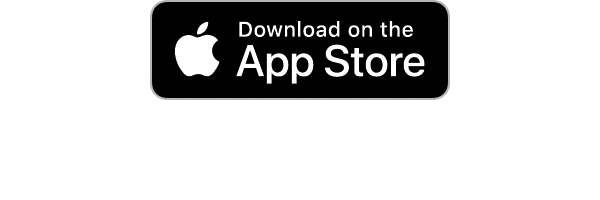According to McKinsey Consulting, the average worker spends over 28% of their workweek, or more than two hours per day, managing emails. Despite this, many struggle to craft professional emails that leave the right impression.
Today we're taking a closer look at how effective email communication and inbox management can improve productivity, response times, and overall professionalism.
The Importance of Professional Emails
Professional emails represent you and your organization, leaving lasting impressions on colleagues, clients, and stakeholders.
There are three primary reasons why they matter:
- They shape perceptions of you and your professionalism
- They contribute to clearer and more efficient communication
- They foster trust and respect in workplace relationships
Shaping Perceptions of Professionalism
Your emails often serve as the first impression you make in a professional setting. A well-written email can communicate attention to detail, respect for the recipient's time, and a polished approach to business communication. Conversely, poorly written emails might suggest a lack of care or competence, which could harm your reputation.
Supporting Clear and Efficient Communication
Emails remain a key tool for exchanging information in business. Well-structured messages that use concise language and a clear email tone ensure that your message is easily understood. Miscommunication can lead to unnecessary delays and errors, making clarity essential in professional correspondence.
Building Trust and Respect
Respectful and thoughtful emails contribute to stronger workplace relationships. When emails are timely, polite, and considerate of the recipient's needs, they build trust. Building trust can improve teamwork and foster an environment of mutual respect, helping to create a more collaborative and productive workplace.
Writing Business Emails: Key Principles of Etiquette
Email etiquette is the foundation of effective email communication. Adhering to established guidelines ensures your emails are clear, professional, and respectful.
There are three primary aspects of email etiquette to consider:
- Writing clear and purposeful subject lines
- Maintaining a professional tone and language
- Proofreading for accuracy and readability
Writing Clear and Purposeful Subject Lines
The subject line is the first part of an email the recipient sees. A well-crafted subject line gives a clear idea of the email's purpose, encouraging the recipient to open it promptly.
It should be specific enough to provide context but not overly lengthy. For example, "Project Update: Q4 Timeline" is more effective than "Update." A thoughtful subject line sets the tone for a professional exchange.
Maintaining a Professional Tone and Language
The tone of your email should reflect professionalism and respect. It involves choosing words carefully and avoiding overly casual expressions unless the context allows it.
Start emails with a polite greeting and address the recipient appropriately. Avoid slang, excessive use of exclamation points, or emojis in business communication. Ensure that your message remains respectful, even when addressing a concern or disagreement.
Proofreading for Accuracy and Readability
Errors in an email can distract from the message and undermine your professionalism. Before sending an email, review it for spelling, grammar, and punctuation mistakes.
Make sure the email flows logically and is easy to read. Short paragraphs improve readability and help the recipient understand the content without unnecessary effort.
Structuring Your Emails for Maximum Clarity
An email's structure plays a significant role in how well the recipient understands its purpose. A clear and organized structure allows your message to stand out and helps avoid confusion.
To achieve this, focus on three core elements:
- An engaging introduction
- A well-organized body
- A strong conclusion
An Engaging Introduction
The introduction sets the tone for the rest of the email. Begin with a polite greeting and address the recipient by name if possible.
State the purpose of your email early, keeping it direct and concise. It ensures the recipient knows why you're reaching out without having to read through unnecessary details. For example, instead of a vague opening, you might write, "I'm reaching out regarding the project deadline updates."
A Well-Organized Body
The body of your email should deliver the core message in a way that is easy to follow. Use short paragraphs to separate ideas and improve readability.
When discussing multiple points, ensure each idea is addressed individually. Avoid overwhelming the recipient with too much information at once.
If necessary, include numbered lists or bullet points for complex topics, though these should be used sparingly. The goal is to maintain a logical flow that guides the reader naturally through the message.
A Strong Conclusion
End your email by summarizing key points or reiterating any actions needed. Include a closing remark that is polite and professional, such as "Please let me know if you have any questions."
If applicable, provide a deadline or timeframe for follow-up. A clear conclusion leaves the recipient with no doubts about the next steps.
Managing Email Response Times
Managing email response time is a significant part of maintaining effective communication. Prompt responses demonstrate respect for the sender's time and a commitment to professionalism.
They also help build trust and prevent delays in workflows. There are three key strategies for improving email response time:
- Setting clear priorities
- Leveraging tools and technology
- Creating consistent habits for email management
Setting Clear Priorities
Not all emails require the same level of urgency. Learning to prioritize your inbox is a valuable skill that saves time and ensures that important messages are handled first.
Focus on emails that have deadlines, involve decision-making, or require immediate action. Less urgent messages can be flagged or scheduled for a later response. It helps you avoid becoming overwhelmed by less critical communication.
Leveraging Tools and Technology
Email management tools, such as filters, auto-replies, and reminders, can make staying on top of responses easier. Filters can categorize emails by sender or subject, while reminders can alert you to messages that need follow-up.
Auto replies are helpful for managing expectations, especially when you're out of the office or handling high volumes of communication. These tools help streamline your workflow and prevent messages from falling through the cracks.
Creating Consistent Habits
Establishing routines for checking and responding to emails can reduce stress and improve response times. Setting specific times during the day for email management helps you stay focused and prevents interruptions during other tasks.
Avoid leaving emails unread for extended periods, as this can create unnecessary backlogs. Consistency in your habits builds a reputation for reliability and professionalism.
Inbox Management Techniques for Professionals
Managing your inbox effectively is essential for staying organized and maintaining a professional image. A cluttered inbox can lead to missed emails, delayed responses, and unnecessary stress.
Using Folders and Labels
Organizing your emails into folders and applying labels is a simple way to streamline your inbox. Create categories that align with your work priorities, such as "Urgent Tasks," "Clients," or "Team Projects."
The system makes it easier to locate important messages and reduces the time spent searching through a crowded inbox. Use labels to mark emails by priority or topic, ensuring that key messages are easily identifiable.
Scheduling Dedicated Email Time
Checking emails constantly throughout the day can be distracting and inefficient. Instead, set aside specific times to review and respond to emails. The approach helps you focus on other tasks without interruptions while still addressing communication in a timely manner.
For example, you might check your inbox at the start of the day, after lunch, and before finishing work. Consistency in these routines ensures you remain organized without feeling overwhelmed.
Minimizing Clutter Through Archiving or Deletion
Unnecessary emails can quickly pile up, making it harder to manage your inbox effectively. Archive emails that you might need later but don't require immediate attention.
Delete email messages that are no longer relevant or useful. By regularly clearing out your inbox, you create a cleaner workspace and improve your overall productivity.
Common Mistakes in Professional Emails and How to Avoid Them
Even with the best intentions, professional emails can fall short if common mistakes are made.
A vague subject line can confuse the recipient and lead to delays in response. If the subject line does not clearly communicate the purpose of the email, the recipient might overlook it or deprioritize it.
For example, using "Meeting" as a subject provides little information compared to "Team Meeting Agenda for March 15." Taking the time to craft specific subject lines ensures that your email will be read and addressed promptly.
Overly lengthy emails can overwhelm the recipient and make it harder for them to focus on the main points. Emails that contain too much detail or try to cover multiple topics in one message are less effective.
Instead, keep your emails concise and focused. Break up information into shorter paragraphs and avoid unnecessary details.
Improve your Email Writing Skills
Professional emails are a cornerstone of effective communication. By focusing on clarity, tone, and organization, you can improve relationships and enhance productivity.
We designed Mailstrom to help you take control of your inbox cleanup.
By grouping related emails, you can delete, archive, or move them in bulk. Use features like one-click unsubscribe and spam blocking to declutter efficiently. With Mailstrom, you stay in control, your way, while keeping your privacy protected.
Clean up your inbox now with Mailstrom!



